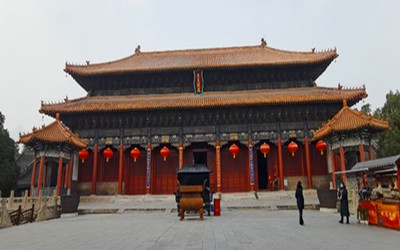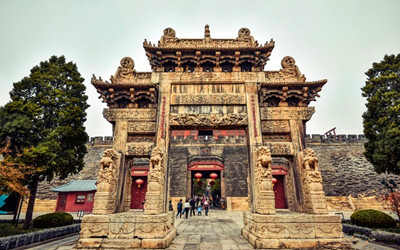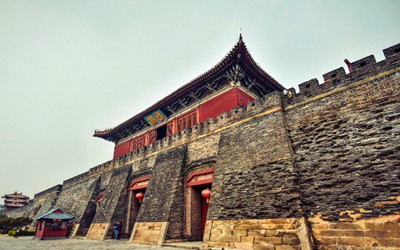Skype: neodalle-travel
Tel: +86 135 7447 2266
E-mail: sales@visitaroundchina.com
 Dai Temple, also called the East Dai Temple, is situated to the north of Tai'an City,Shandong Province. As a Taoist temple, it is not only the largest and best-preserved architectural complex on Taishan Mountain but also one of the four most famous ancient architectural complexes ( the Forbidden City in Beijing, the Temple of Confucius, the Kong Family Mansion and the cemetery of Confucius in Qufu, and the Mountain Resort in Chengde) in China.
Dai Temple, also called the East Dai Temple, is situated to the north of Tai'an City,Shandong Province. As a Taoist temple, it is not only the largest and best-preserved architectural complex on Taishan Mountain but also one of the four most famous ancient architectural complexes ( the Forbidden City in Beijing, the Temple of Confucius, the Kong Family Mansion and the cemetery of Confucius in Qufu, and the Mountain Resort in Chengde) in China. The Tiankuang Hall is the main structure here. Built in the Song Dynasty, it is also called the Ren'an Hall or the Junji Hall. In front of the hall there is a huge Ming Dynasty iron censer and two Song Dynasty pails. On each side of the censer and pails stands a pavilion with a stone tablet erected within it. On the tablets are inscribed the poems of Qianlong, a great emperor in the Qing Dynasty (1644-1911). In the hall is enshrined the God of the Taishan Mountain which is about four meters in a shrine. Above the shrine is hung the plaque inscribed with four Chinese characters 'Pei', 'Tian', 'Zuo' and 'Zhen' written by Kangxi, an emperor in the Qing Dynasty. On the walls of the hall is painted a giant Taoist mural. It is said that the mural had been painted in the Song Dynasty. With a height of three meters and a length of 62 meters , it depicts the scene of the God of the Taishan Mountain having a tour of inspection and coming back to his palace.
The Tiankuang Hall is the main structure here. Built in the Song Dynasty, it is also called the Ren'an Hall or the Junji Hall. In front of the hall there is a huge Ming Dynasty iron censer and two Song Dynasty pails. On each side of the censer and pails stands a pavilion with a stone tablet erected within it. On the tablets are inscribed the poems of Qianlong, a great emperor in the Qing Dynasty (1644-1911). In the hall is enshrined the God of the Taishan Mountain which is about four meters in a shrine. Above the shrine is hung the plaque inscribed with four Chinese characters 'Pei', 'Tian', 'Zuo' and 'Zhen' written by Kangxi, an emperor in the Qing Dynasty. On the walls of the hall is painted a giant Taoist mural. It is said that the mural had been painted in the Song Dynasty. With a height of three meters and a length of 62 meters , it depicts the scene of the God of the Taishan Mountain having a tour of inspection and coming back to his palace. The bronze pavilion and the iron tower are located at the backyard of the Dai Temple. Also called Jin Que, the bronze pavilion was cast in 1615. In the pavilion is enshrined a Taoist deity. The iron tower was cast in 1565. Originally it was a 13-tier tower. During the Anti-Japanese War (1937-1945), it was destroyed and only left four tiers. Both of the bronze pavilion and the iron tower reflect the ancient Chinese artisans' exquisite workmanship of casting.
The bronze pavilion and the iron tower are located at the backyard of the Dai Temple. Also called Jin Que, the bronze pavilion was cast in 1615. In the pavilion is enshrined a Taoist deity. The iron tower was cast in 1565. Originally it was a 13-tier tower. During the Anti-Japanese War (1937-1945), it was destroyed and only left four tiers. Both of the bronze pavilion and the iron tower reflect the ancient Chinese artisans' exquisite workmanship of casting. Ask Questions ?
Ask Questions ?